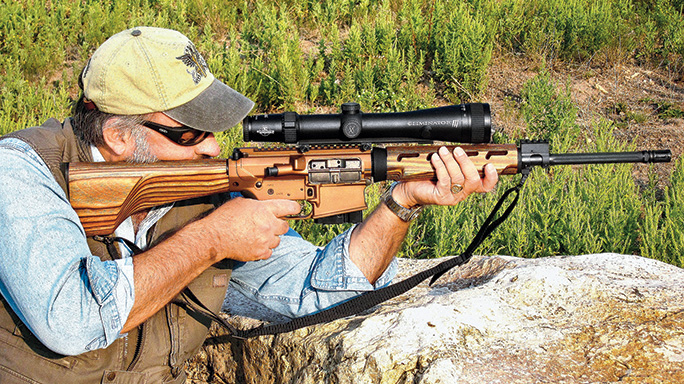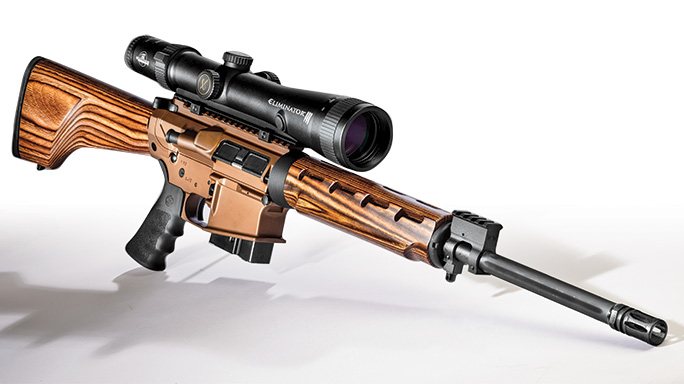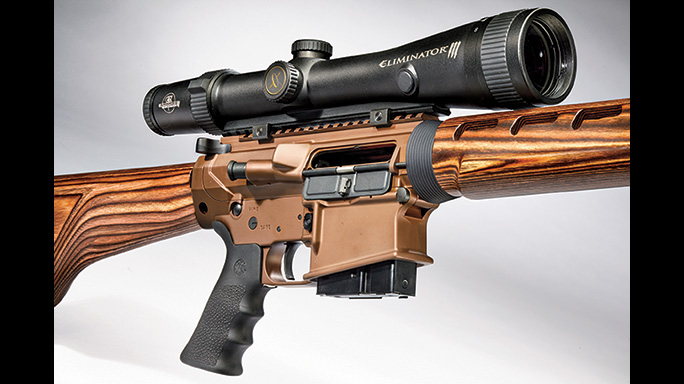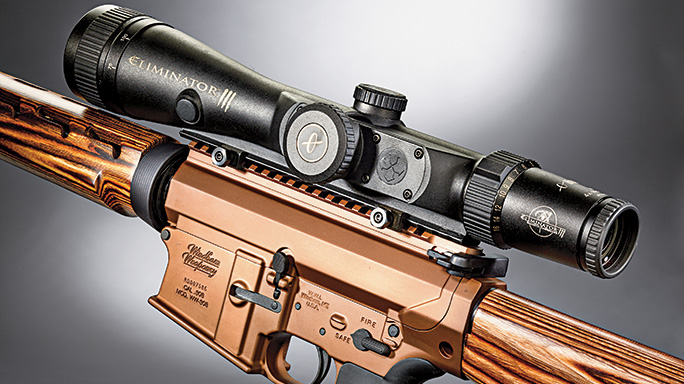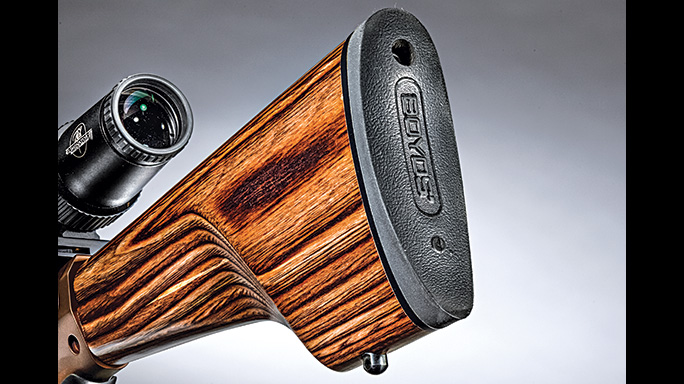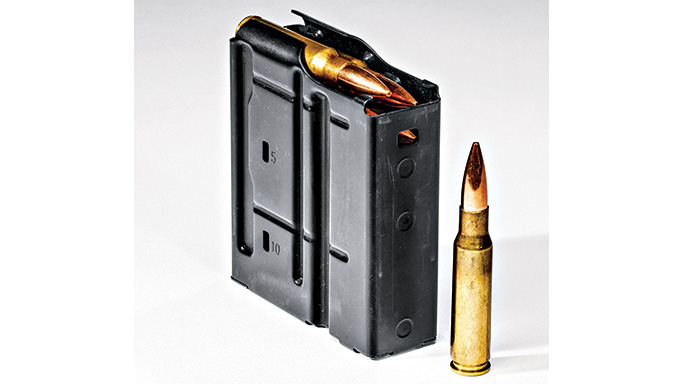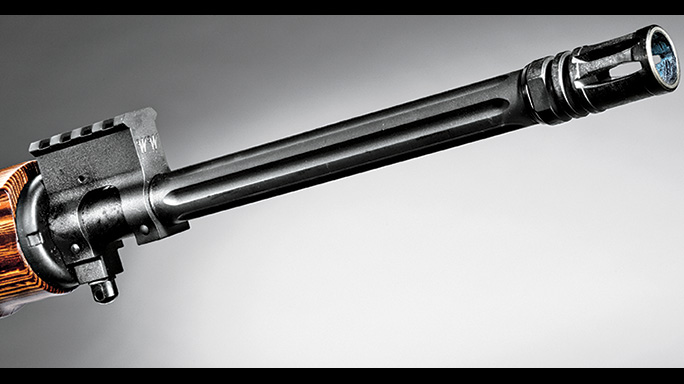If you grew up in a time and place before the AR-15 became America’s sweetheart, as I did, chances are your first impressions of the plastic-and-aluminum rifles were a bit less than love at first sight, as mine were. Since that long-ago occasion on a hot Texas day not far from San Antonio when a government employee handed me and 30 or so other guys with shaved heads and baggy green fatigues an M16, 40-something years of shooting the Stoner design in a number of sizes, shapes and configurations has changed my mind about them. But back then, coming from a background where working guns were solid wood and steel, I was distinctly unimpressed. It was ugly. It had no grace, no personality, no stylistic flair, no signs of hands-on craftsmanship, and it looked and felt downright flimsy.
- RELATED STORY: AR Warriors: 6 Must-Have Rifles From Windham Weaponry
Time passed, I carried M16s and AR-15s professionally in military and police uniforms, as well as on my own time, and eventually found the AR a far better design than I originally realized. Grace? Stylistic flair? Well, still a resounding “no” there, but tough enough, reliable enough and (once the caliber wars created some very interesting possibilities) powerful enough to fill a number of roles. When the steamroller got up sufficient momentum and fans of the platform began to take to the idea of a .308 version on big-game hunts, the race was on. Which eventually led to something I never thought I’d see—a truly classy AR.
Classy Hybrid
Advertisement — Continue Reading Below
One of the things that made the original M16 rifle so unique was the use of lighter and easier-to-make materials and components, with all the visual appeal of an asphalt re-surfacer. Functional, yes; aesthetically rewarding, no.
Windham Weaponry has actually managed to come up with several hybrid ARs that bridge the gap between “moderne” and “classique” and offer genuine standout wood furniture among a sea of basic black and boring synthetic. Normally, I’m a bolt guy when it comes to the .308 Winchester, but during a periodic revisit to Windham’s website to see what the company was up to, the .308 Hunter, with its Nutmeg laminate furniture, reached out through my computer screen.
Yeah, I know—wood offers very little real advantage over conventional plastic in an AR context, but two areas where it does up the game are in strength and cosmetics. The laminated wood on these rifles comes from Boyds’, a well-known name in OEM and aftermarket stocks, who sources them as blanks from a Maine company and then CNC machines and finishes them in-house before supplying them to Windham for installation. The laminate will not warp, it won’t crack, it’s much more solid than thin synthetics, and the buttstock may not be adjustable, but it also has no small slider parts like latches to break or wear out if the rifle has to lead a hard life. And it just looks cool. It’s a throwback to earlier times where many of us hunted with the feel and appeal of solid wood on our rifles.
Advertisement — Continue Reading Below
The Hits Keep Coming
But if the wood’s not enough to sell you, there’s more. Windham pays attention to quality control, in both materials and manufacturing. The .308 Hunter features an 18-inch, air-gauged, 4150M chrome-moly steel, medium-weight, fluted barrel that is chrome lined with a 1-in-10-inch twist rate and equipped with an A2-style flash suppressor. The railed gas block features a steel sling swivel.
The forged 7075-T6 upper is paired with a matching lower with an integral, solid triggerguard, and both are hardcoat anodized in coyote brown to match the darker Nutmeg furniture, including the two-piece ventilated handguard and solid buttstock, which comes with a rear sling swivel and a thin, black rubber Boyds’ buttpad to help absorb recoil.
Advertisement — Continue Reading Below
Inside, the bolt is fabricated from strong Carpenter 158 steel and the bolt carrier is made from high-quality 8620 steel. There are no MIM parts, and the fire control group uses the same parts as Windham’s 5.56mm ARs, so they are interchangeable with any quality-made mil-spec parts from other sources. The firing pin is proprietary to Windham’s, though; the world of the .308 AR is not quite as standardized as the 5.56mm, and you can’t always assume one maker’s specs will translate directly to another maker’s gun. Besides the fire control group’s commonality, more good news comes in regard to the magazines. The rifle ships with one steel, five-round
magazine from D&H Tactical, and the company sells spare five-rounders at $26.95, and 10- and 20-round Magpul PMAGs for $18 and $20, respectively. Windham sells a full range of parts to keep these rifles going. The AR is relatively kitchen-table friendly to work on, and whether you order from Windham or another source, it should be easy to keep a small stock of high-wear items like extractors, firing pins, ejectors, hammers and triggers on hand if you’re so inclined.
A black Hogue OverMolded pistol grip, single-sided safety, forward assist and standard Picatinny top rail complete the package, and the whole rifle adds up to 8.5 pounds unloaded. In the .308 AR field, where rifles typically run heavy, this is not bad at all. It might be a shade heavy for all-day treks up mountains in the fall, but for tree-standers and other still-
hunters, it’s very usable.
Dialing-In Accuracy
Advertisement — Continue Reading Below
The Burris 4-16x50mm Eliminator III seemed like an interesting way to run the Windham rifle through its paces for accuracy, with its rugged alloy housing containing an adjustable illuminated reticle, a laser rangefinder and a user-
programmable ballistic calculator optimized for the .308 Winchester (but adaptable to the .223 Remington and others). The Eliminator III uses two included steel crossbolts to mate with a standard Picatinny base rail. Powered by a single CR123A battery, the Eliminator III scope adds 30.4 ounces to the rifle, but there are hunts where the weight could be considered justifiable.
The unit is built to remove long-range guesswork by combining the distance in either user-selected yards or meters (from the internal laser rangefinder) with a three-digit drop number and two-digit ballistic coefficient (taken from tables provided by Burris) for specific commercial loads and programmed into the optic, to automatically light up an appropriate red dot on a descending stadia line in the reticle display to adjust for elevation at whatever distance the target happens to be. A 12-page cartridge list is included, but Burris has figures for over 4,000 known factory rounds if your pet’s not in it, running from .17 Remington to .50 BMG, and once your chosen load’s programmed in and you’ve zeroed exactly dead-on at 100 yards with the crosshair junction, all you have to do is center the crosshairs on your target, push one button to activate the laser and reticle display, then put the correct illuminated red dot on target and pull the trigger. The range displays briefly for 10 seconds before shutting off, and the red dot for another 80 seconds. Windage offset scales up to 10 mph are provided as a part of the illuminated display. The ballistic calculations are based on a maximum drop at 750 yards, but the rangefinder and displays can reach farther with practice and a good load.
It takes a few minutes to read the setup instructions and program the scope for a given round, but even a Luddite like me can figure it out, and once set up, there’s no need to change anything in the electronics unless you change something in the ballistics.
Advertisement — Continue Reading Below
.308 Performer
Obviously, you’re asking yourself one of two questions right about now: Isn’t the Burris a little over-scoped for the gun, or isn’t the Windham a little under-gunned for the scope? And the answer, of course, is a definite maybe. This may not be an ideal rifle/scope combo for most hunters, but it does show some of the capabilities of both products.
On a 92-degree day, I shot six commercial loads through the .308 Hunter to measure its accuracy at 100 yards, and on a 90-degree day the following week, I set up a sandbag rest in the desert and shot the best of the two heavyweight .308 loads—Black Hills’ 178-grain Match BTHPs—out to 400 yards, with the Burris programmed accordingly. I’d hoped to go farther, but gusty crosswinds quartering from the rear were enough of a nuisance at 400 yards and more than I wanted to fight beyond that.
Advertisement — Continue Reading Below
Letting the scope’s computer do the work for elevation adjustments, the .308 Hunter knocked down my coyote-sized steel buffalo silhouette with one shot at 100, 200 and 300 yards, and with the buff sitting approximately 100 feet up on a hillside at 400 yards, elevation wasn’t a problem, but doping the crosswind was. Taking several shots to knock the steel down, I didn’t realize till I climbed back up to it that I’d actually hit it five out of 10 times but had it too well-supported against thick brush to tip over, until I shot one leg out from under it. Bullet splatter kicking up dust around it had me thinking I was missing more than I really was.
- RELATED STORY: Gun Test: Windham Weaponry’s SRC-308 Carbine in 7.62mm
All in all, it was an informative test of both products. The Burris is pricey at $1,799, but it can be a godsend for those who have a hard time with range estimation, and the Windham .308 Hunter, at $1,587, is reasonably priced for a .308 AR with more than enough accuracy and range to reach out there if needed.
If you like the AR platform, prefer .308 power levels and think the elevation-assist optic can boost your chances of meat in the freezer, this rifle/scope combination’s worth the money and worth a try. There are obviously other crossover applications for a long-range .308 semi-auto that also factor in, too.
Advertisement — Continue Reading Below
For More Information
Windham Weaponry: windhamweaponry.com; 855-808-1888
Burris Optics: burrisoptics.com; 970-356-1670
Advertisement — Continue Reading Below
